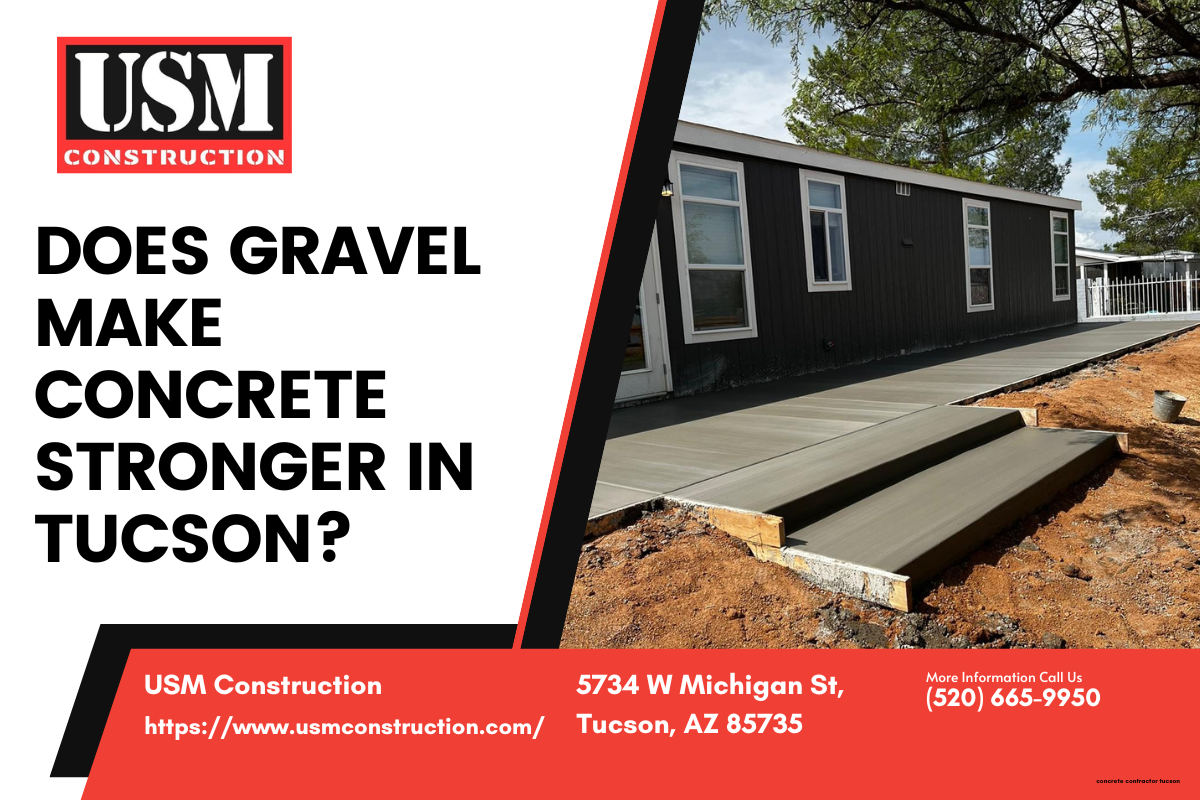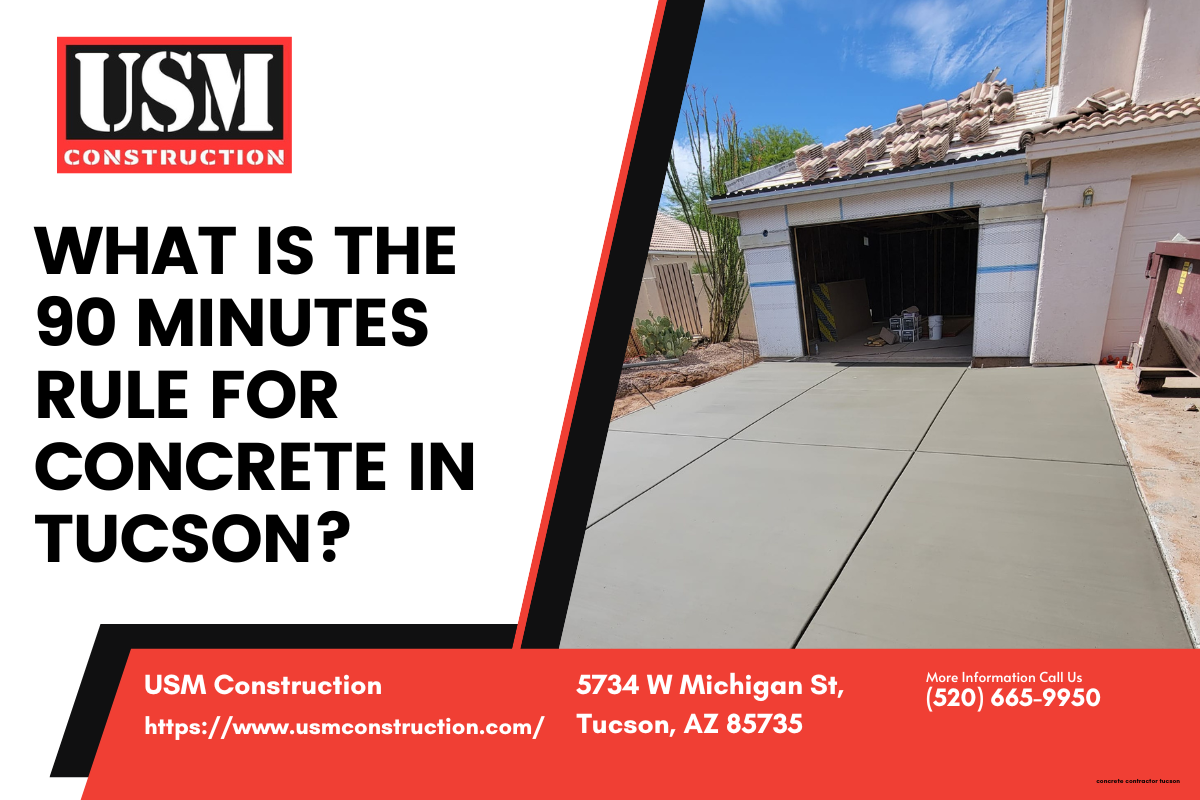TABLE OF CONTENTS
The standard 4-2-1 concrete mix rule is a widely known guideline, but relying on it for projects in Oro Valley can lead to premature cracking and structural failure. True durability in our Sonoran Desert climate requires a professional approach that adapts this basic recipe to counter extreme heat, address unique soil conditions, and strictly adhere to specialized local building codes.
Deconstructing the Standard: What Is the 4-2-1 Concrete Mix Ratio?
If you've ever looked into a DIY concrete mix recipe, you've likely come across the "4-2-1 rule." It's a simple volumetric recipe: 4 parts gravel (the coarse aggregate), 2 parts sand (the fine aggregate), and 1 part Portland cement. This cement sand aggregate ratio has been a go-to for generations because it's easy to remember and provides a reasonably strong mix for general-purpose applications like small posts or non-structural walkways in mild climates.
The strength of this mix, often measured in pounds per square inch (PSI), can vary significantly based on the quality of materials and, most critically, the amount of water added. A properly mixed 4-2-1 batch typically yields a compressive strength of around 2,500 to 3,000 PSI after 28 days of curing. This might be sufficient for a simple garden path, but it rarely meets the minimum concrete strength for footings, foundations, or a durable Oro Valley concrete driveway installation.
The primary benefit of the 4-2-1 rule concrete is its simplicity for site-mixed concrete vs ready-mix. You can batch it by volume using buckets or shovels. However, this simplicity is also its greatest weakness. It doesn't account for the specific characteristics of your aggregates, the ambient temperature, or the structural demands of the project. For anything more than a basic DIY task, it’s a gamble.
The Oro Valley 'X-Factor': Why Our Climate Demands a Different Approach
Pouring concrete in Southern Arizona is fundamentally different from doing so in a more temperate region. The intense sun, low humidity, and dramatic temperature swings create a hostile environment for curing concrete. These are the factors a professional contractor must manage.
Extreme Heat and Low Humidity
The single biggest challenge is the rapid evaporation of water from the mix. Concrete doesn't "dry"—it cures through a chemical reaction called hydration. If water evaporates from the surface too quickly, the hydration process stops, leading to a weak, porous surface prone to shrinkage cracks and spalling. This is especially problematic during our long, hot summers. In fact, concrete poured in hot weather can have significantly reduced 28-day strength if not managed correctly, according to the Portland Cement Association. The standard water to cement ratio for concrete has to be meticulously controlled, as adding too much water to improve workability in the heat will severely compromise the final strength.
Monsoon Cycles and Thermal Shock
The dramatic temperature drops during a monsoon storm can cause thermal shock to a new concrete slab, leading to cracking. Furthermore, the intense, sudden rainfall requires that all grading and site preparation be flawless to ensure water drains away from foundations and flatwork, preventing erosion and undermining of the structure. A standard mix lacks the resilience to withstand these repeated cycles of stress year after year.
Beyond Dirt and Gravel: Soil, Grading, and Oro Valley Building Codes
A concrete slab is only as stable as the ground beneath it. This is where local expertise in grading and an understanding of regional geology become non-negotiable. Pima County, where the town is located, has incredibly diverse soil types. Some areas contain expansive clays that swell with moisture and shrink as they dry, while others are rocky or have poor compaction. A geological report shows that the valley has complex soil compositions, such as the 'Grabe-Arizo-Pinaleno complex,' which necessitates detailed surveys to engineer the right foundation, as documented in Pima County maps. Simply scraping the ground level and pouring a slab is a direct path to foundation failure.
Proper grading for a concrete foundation is a science. It involves creating a stable, well-draining base and ensuring the soil has been compacted to the correct density. This work is governed by strict local rules. The Town of Oro Valley has adopted the 2018 International Building Code (IBC) and Residential Code (IRC), but with specific 'Town of Oro Valley Amendments.' These amendments detail local requirements for things like soil bearing capacity and footing depths, which a generic 4-2-1 mix is not designed to address. A professional Oro Valley grading and site preparation contractor will understand these local nuances and ensure your project starts on solid ground, with all necessary Oro Valley building permits for concrete secured.
When the Rule Isn't Enough: Professional Admixtures for a Desert Climate
To overcome the environmental challenges, professional concrete contractors use sophisticated chemical additives called admixtures. These are ingredients added to the concrete mix before or during mixing to modify its properties. Relying on a simple 4-2-1 mix without admixtures in our climate is like trying to build a modern car with 1950s technology.
Two essential admixtures for hot-weather concreting are:
- Set-Retarding Admixtures: These slow down the initial curing process, giving workers more time to place and finish the concrete before it gets too hard. This is critical when the ambient temperature is high, as it prevents "cold joints" and ensures a smooth, uniform finish.
- Water-Reducing Admixtures (Superplasticizers): These increase the "slump" or workability of the concrete without adding more water. This allows for a lower, stronger water-to-cement ratio while making the concrete easier to pour and finish.
The use of these additives isn't just a good idea; it's a standard of practice for high-quality work. Even the Arizona Department of Transportation's official specifications mandate the use of admixtures to ensure the durability of concrete used in public infrastructure, as outlined in their Standard Specifications for Road and Bridge Construction. For a new residential foundation pouring in Oro Valley, these are essential tools for long-term performance.
Comparison: Standard 4-2-1 Mix vs. an Oro Valley-Adapted Mix
To understand the difference in performance, here is a direct comparison of a standard mix versus a professionally designed mix for our local conditions.
Common Concrete Questions Answered
What strength should concrete be at 7 days?
Concrete gains strength over time. A common benchmark is that concrete should reach about 65-70% of its specified 28-day compressive strength by day 7. So, for a 4,000 PSI mix, you would expect it to test at around 2,600-2,800 PSI after one week. The ratio of 7 days and 28 days strength of cement concrete is a key indicator of a proper cure.
What is the best ratio for mixing concrete?
As this article explains, there is no single "best" ratio. The best concrete mix for a retaining wall will be different from the ideal concrete mix for a patio slab in Arizona. The correct mix is engineered based on the project's structural requirements, environmental exposure, and local building codes. This is why professional ready-mix concrete suppliers and experienced contractors create specific mix designs rather than relying on a generic rule.
What is the 10/20/30/40 rule for concrete?
You may have heard this term, but the "10/20/30/40 rule" is not a standard, recognized engineering principle for mixing concrete like the 4-2-1 rule. It may be a mnemonic used by a specific company or for a different trade. In the professional concrete industry, mix design is based on performance specifications like PSI, slump, air entrainment, and aggregate size, not on such rules.
Making the Right Choice for Your Needs
The right concrete solution depends entirely on your project's scale, purpose, and long-term goals. The standard rule might seem simple, but it rarely delivers the quality required for lasting value in our unique environment.
For the New Home Builder
Your primary concern is the long-term structural integrity of the home's foundation. You need a contractor whose expertise goes far beyond a basic mix. You should be looking for a team that understands Oro Valley construction regulations for foundations, performs proper soil analysis and grading, and uses an engineered concrete mix with the right admixtures. For elements like reinforced concrete slab design or a post-tension slab, a deep understanding of local codes and engineering is paramount. Prioritize a contractor who can guarantee the foundation meets or exceeds the minimum concrete strength for residential foundations as specified by the town.
For the Existing Homeowner
You're looking to enhance your property with a new driveway, RV pad, or patio that can withstand the blistering sun without cracking. Durability is key. An Oro Valley-specific adapted mix is essential to prevent the surface from deteriorating. Ask potential contractors about their curing process in the summer heat and what admixtures they use to ensure a strong, dense surface. For a driveway concrete mix ratio, you need a higher strength mix than you would for a simple sidewalk to handle vehicle loads.
For the Commercial/Civil Project Manager
Your projects demand strict adherence to architectural and engineering specifications. You require a contractor with a proven track record of handling large-scale pours, managing complex logistics with local concrete suppliers, and navigating the municipal permitting and inspection process. Your partner must be proficient in advanced techniques and be able to provide documentation for all mix designs, strength tests, and quality control measures, ensuring full compliance with all relevant Pima County and Oro Valley building regulations.
Ultimately, achieving a durable, long-lasting concrete structure in Oro Valley requires more than just a recipe—it demands local expertise and a commitment to quality that starts from the ground up. The foundation of any successful project is choosing a contractor who understands the unique challenges of building in our desert environment. At USM Construction LLC, based in Tucson, AZ, we specialize in engineering concrete solutions specifically for the demands of Southern Arizona. For a professional assessment of your project and a transparent quote, contact our expert team today.


























